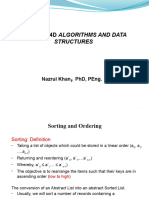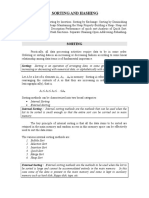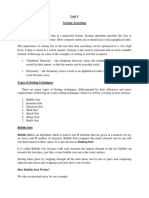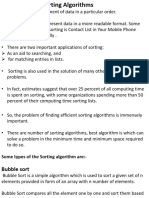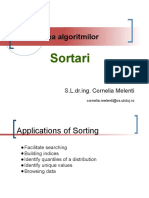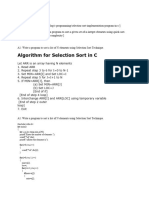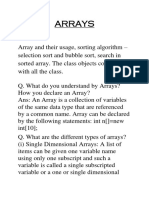0% found this document useful (0 votes)
17 views10 pagesManual DSLab PR-02
The document is a laboratory manual for a Data Structures Lab course, detailing an assignment focused on implementing sorting algorithms in C++/Java for an e-commerce product list. Students will learn about Bubble, Selection, and Insertion Sort algorithms, as well as class and object usage in programming. The manual includes explanations of sorting algorithms, pseudo-code, examples, and complexity analysis.
Uploaded by
Geetanjali KadamCopyright
© © All Rights Reserved
We take content rights seriously. If you suspect this is your content, claim it here.
Available Formats
Download as PDF, TXT or read online on Scribd
0% found this document useful (0 votes)
17 views10 pagesManual DSLab PR-02
The document is a laboratory manual for a Data Structures Lab course, detailing an assignment focused on implementing sorting algorithms in C++/Java for an e-commerce product list. Students will learn about Bubble, Selection, and Insertion Sort algorithms, as well as class and object usage in programming. The manual includes explanations of sorting algorithms, pseudo-code, examples, and complexity analysis.
Uploaded by
Geetanjali KadamCopyright
© © All Rights Reserved
We take content rights seriously. If you suspect this is your content, claim it here.
Available Formats
Download as PDF, TXT or read online on Scribd
/ 10





